Gardening the edge of the impossible (1)
Imagine yourself on a desert island. Sun, sand, sea and salt, and not much else
Now as a homesteader, how would you make it work? To meet your needs?
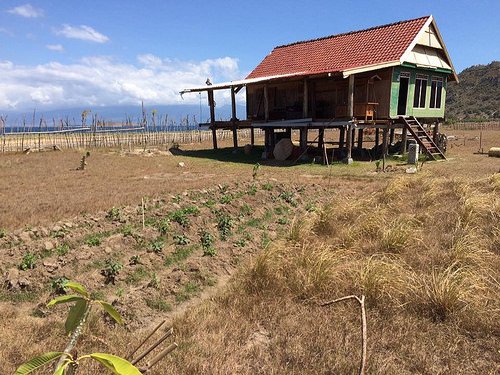
I just happen to be in that sort of a situation, not castaway, but running a long term project to regreen some very desolate land on the Island of Sumbawa in Indonesia.
We manage some large areas on nearby islands and as a hobby I have a private 1.1 Hectare (2.5Acre) plot of coastal sandplain behind the rainshadow of Lomboks’ 3700 metre Mount Rinjani
I picked this up to challenge my own ability to fix what was locally percieved as the unfixable
Local people sold this long ago, in 1984 the original owner took a look at it and in disgust sold it for $300, deeming it useless to grow anything. Since then it has sat abused and neglected, until i found it 30 years later and accepted the impossible as a challenge
It is located off to the side in an area that has been somewhat abandoned. It had near to zero economic value and nothing to local community, it was only freeranged for extremely low productivity pasture for goat and cattle owned by wealthy people in the far away capital
Here's the Google sattelite imagery
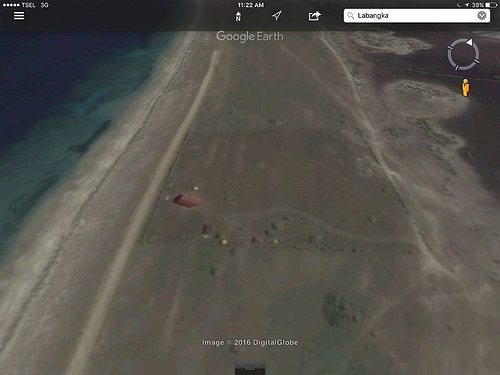
There were no Trees on site, only some mangled shrubs which were small trees that have been continuously cut for firewood over the years so that athey are unable to regrow. I've been pruning these now that they are protected sothat they will regrow into trees, however you can see that the total number of trees on this 11,000m2 of land was 16 plants
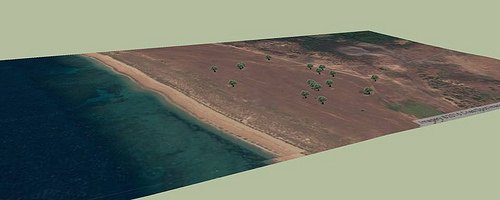
They are all one species, the hardy Myoporum montanum, toxic to livestock, tolerant of drought and salt and able to coppice when repeatedly hacked off for stickwood for local cooking
https://en.wikipedia.org/wiki/Myoporum_montanum
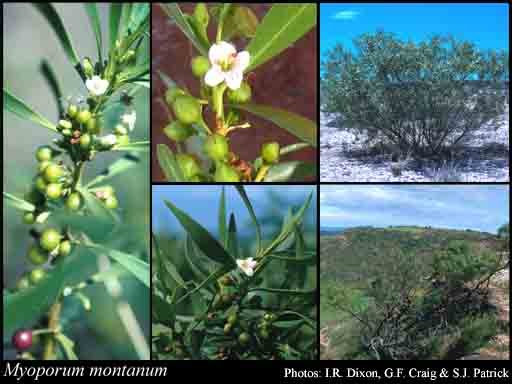
This species is also native to nearby Australia
It's Infertile, hot, barren, salty and sandy. It’s the worst soil I’ve ever had to garden in, it’s not even real soil. I chose the worst land in the area, because nobody else believes it’s possible to do anything with it, and anything I can do here can be done much more easily anywhere else in the region
This will test if i'm as valuable in my field of ecological restoration as intend to be ;)
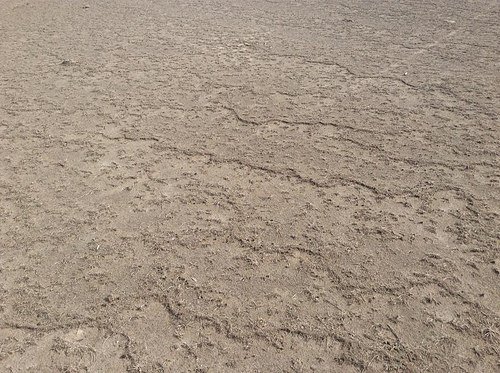
This was my first look at the land here. Desolate, salty, dry and dead December 2014
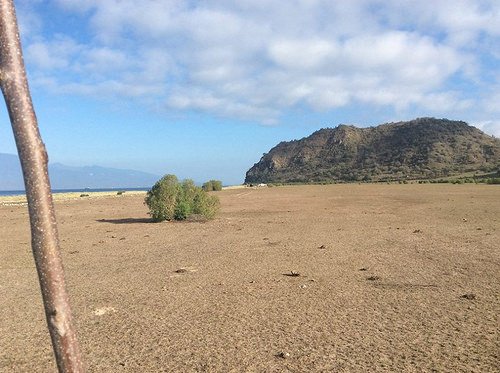
A long coastal sand plain. Previously forested but now barren from years of abuse
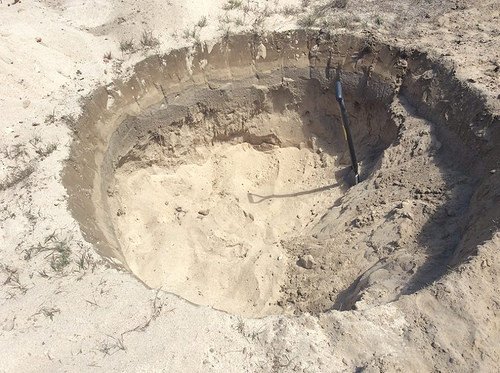
Picture of soil profile showing a very thin layer of a silty sand, grey sand then with dry beach sand and coral fragments below
Through trial and a lot of errors I’ve started to crack this code. In doing so and seeking anything published by persons with first-hand experience but I’ve found there is not so much information out there, in one place, thorough digging is required followed by a process like solving a 4 dimensional Jig-Saw puzzle
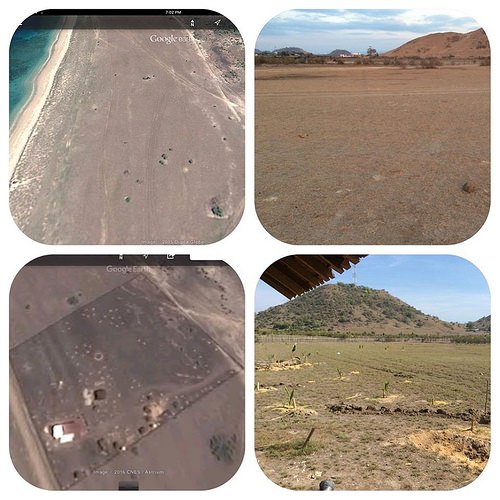
visible changes from satellite imagery after 1 season, this is the effect of fencing and commencing tree planting
I’ve developed a basic plan that involves building several buildings to take advantage of the great beachside location in this area that is getting a lot more tourism interest. It’s not something to do all at once, it’s a 5 year plan. And before much of the building come the regreening so that the environment is changed from one that is unpleasantly exposed to one that is a green and comfortable
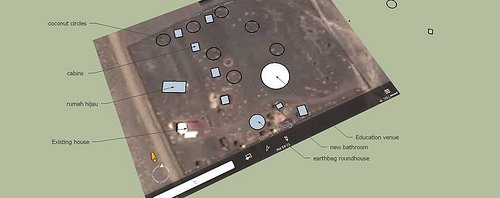
The basic plan B
Now I could take one of two options, Plan A is the most simple, it is just regreening the location with whatever hardy plants can modify the site. It wouldn’t include hardly any productive plants because as a rule these generally require better conditions. By just using mostly native plants I could regreen this site over the course of about 3 wet seasons.
Plan B involves adding in as many productive plants as possible, still amongst the supporting framework of the hardy plants.
I choose Plan B. and so I must think and work hard to solve the limiting factors and figure out which planst are best suited to my site. To ensure their survival I seek to understand the site deeply and use any and all available strategies to succeed
Though the land is connected to the greater island of Sumbawa, its underlying geology is almost identical to tropical Atolls, made up of brken coral and sand, and subject to very long dry seasons, high heat and then monsoonal downpours over 3 to 4 months
These are some of the factors to contend with
Heat and wind
Its always windy here, and the night time temperatures rarely drop to 26 degrees celcius in the coolest season. During the day the ambient temperature might be 32C however without shelter and on a parched coastal plain the ground temperature soars
When areas of the tropics are deforested or overgrazed the exposed soil surface can get hot enough to cook an egg. 62 degrees celcius is the top temperature I’ve measured.
This can girdle young plants that try and establish, actually cooking the base of the stem near the soil surface. It also decreases the seed bank viability and prevents establishment of seedlings because of the very short window of time between when it rains and when the soil is again baked dry.
Poseidons’ trident – salt, drought and lime
Any one of these is a crushing limitation to conventional gardening, however all 3 are standard for Atoll type environments. A combination of high levels of salt and sodicity (related but different), long periods of no rain or no effective rainfall (again related but diferent), and the presence of limestone causing high alkalinity which blocks plant nutrient availability.
These features interact with each other increasing the severity of the other. For example;
Low nutrients
Lack of sufficient nutrients decreases the water use efficiency of plants. If two plants are side by side with the same amount of water, the one in the fertile soil will grow more and survive longer in drought
My increasing the availability of nutrients we can achieve more growth with less water
Drought and salt
These interact, given the same nutrients and amount of water, two plants grown side by side with ones’ water being more saline, the one with the least salt will grow more. It is harder for the plant to extract water from the more saline solution
The result is an extremely harsh growing environment that severely limits the range of plants that can be grown and their productivity
If we have more water the effect of the salt is lessened. If we have less Salt then the effect of water shortages is lessened
Crusting and silts
Another effect of salt in the soil is the loss of soil structure. Rather than forming nice aggregates, a crumblike structure, that allows air and rain to soak in and permeate the soil, it causes the soil to close up. When it rains the water hits the surface and the soil swells to form a plug that stops further infiltration. This is particularly bad where the topsoil contains silt and to a lesser degree clay, these are very small particles that plug up very easily.
There are no worms. Earthworms cannot live in this environment and so there is significantly less mixing of the topsoil. Once the soil closes it remains closed unless it is disturbed. Instead we have land crabs, but unfortunately not a type that we can eat. These burrow under young trees and disturb or eat the roots, they do however create burrows that do allow some water to infiltrate to the subsoil for storage.
Because of the total desertification of the site there are no worm alternatives either. I expect once the cover returns that we will find new species turning up to feed on the decaying organic matter, or we can seed them by bringing in forest litter from nearby remnant forest areas. Animals we are likely to be able to rely on are Isopods like Pillbugs, slaters and springtails, millipedes, leaf litter roaches, and numerous other arthropods. These feed on the leaf litter and recycle nutrients back to the topsoil under quite arid and saline conditions
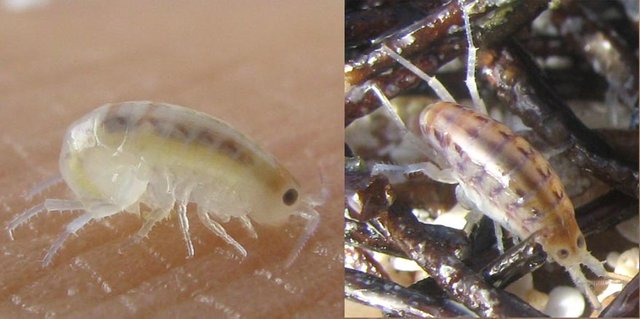
Springtails and other Isopods are a double edged blade. On one hand they offere invaluable nutrient recycling service, but they can also predate on seedlings. The trick will be to helps balance the ecosystem so that we maximize benefit and minimize adverse effects
Nutrient deficiencies
Because of the sand and lime foundation of the soil there are chronic shortages of Iron, Manganese, Zinc and Magnesium, in addition to the Shortage of macronutrients Nitrogen, Phosphorus and Potassium. The soils are mostly Silica with Calcium carbonate. The high lime content shifts the pH so that what is present becomes insoluble and unavailable for plant uptake
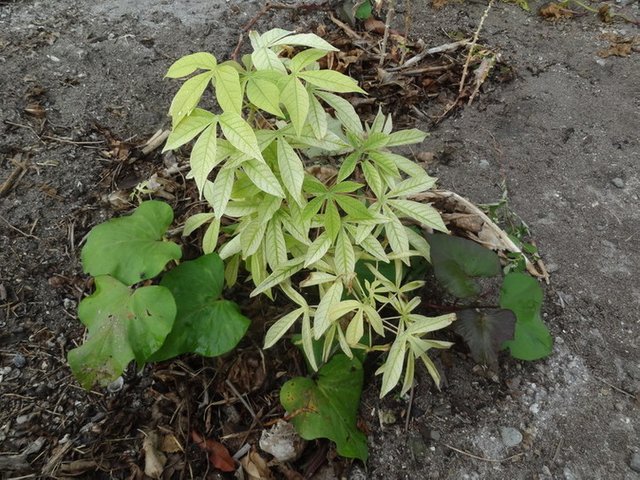
Cassava showing chlorosis that is common in salty areas due to excess Chloride ions
Saline water
Depending on the situation there may be a fresh, saline or no water aquifer at all. In the best of situations a freshwater lens may rest on top of the seawater later under the ground. This is what allows Coconuts to grow on so called desert islands. If the water is saline then it depends how much so, there are bands of tolerance for even the most hardy species and growth and productivity decrease sharply as the salinity rises
dS table
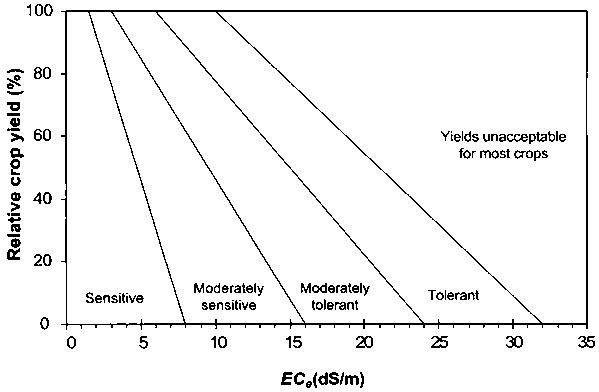
Showing how various crops yield according to salinity
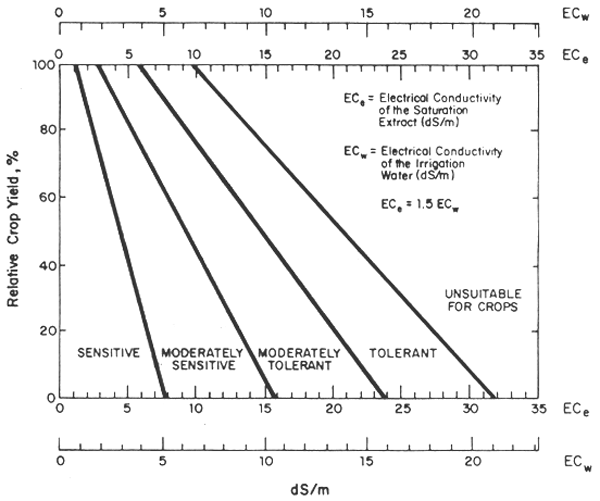
DS reduction in growth
If we take one tolerant useful salt tolerant plant, Vetiver grass (Chrysopogon zizanoides) and examine how it tolerates salt, we see it also has yield reductions
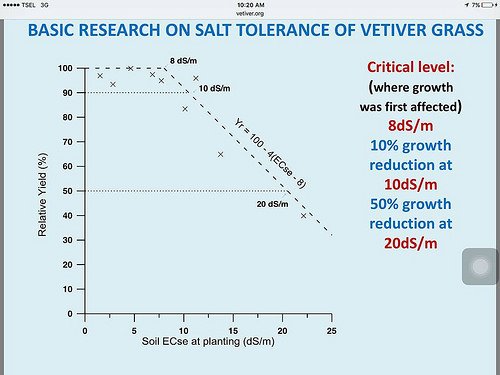
We will try to find the species that tolerate the high levels of salt. It is an interesting feature of ecosystems that they tend to improve the sites condition as they develop. Salt tolerant plants add organic carbon to the soil that binds up salt, and they also open the soil structure allowing rain to wash the salt through to deeper layers
Among one species there may be a great deal of difference in the tolerance to salt, and salt tolerant plants have various mechanisms of tolerance


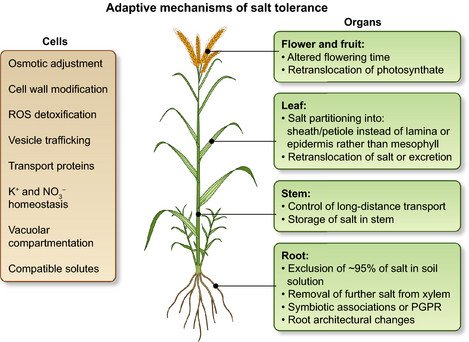
Up the back there are salt flats of about 1500m2 that are barren. not even local grass grows. So we will start there
Any growth there is a good thing to cool and shelter the site and begin the repair processes
Vetiver grass
Vetiver grass is able to grow quite satisfactorily using saline ground water to rehabilitate sites that are degraded
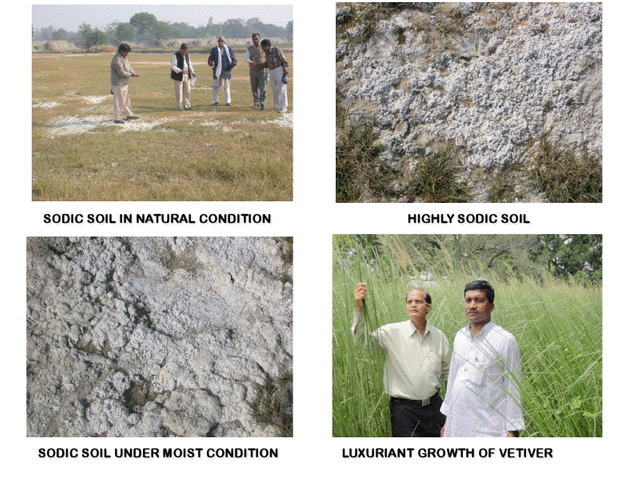
Vetiver rehabilitation of Sodic land
I found this interesting study
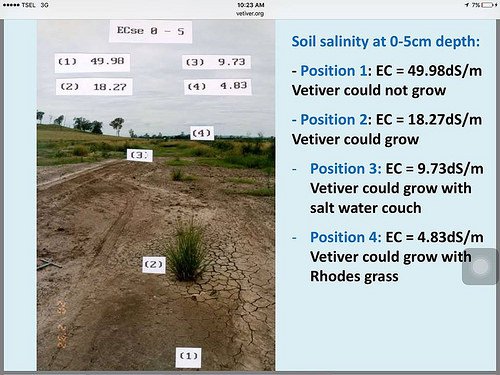
Which matches my experience. I planted several clumps in a transect across the rear of the property where the soil is so salty that even local grasses will not grow.
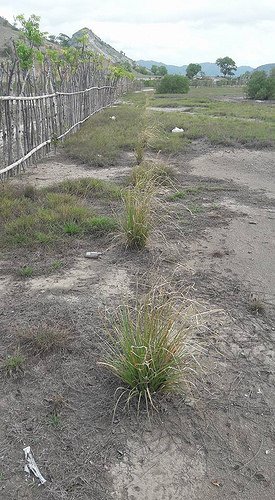
From this is can estimate that the dS in this zone is around 18-20 dS/cm
This is very useful as the Vetiver can be planted here to provide useful mulch, and potentially fodder for animals.
Over time the Vetiver should allow more of the salt to wash away deeper into the subsoil and reduce the crusting saltpan effect
This is one Win
Salt wattle
Another species we are just starting to test out is Acacia ampliceps from North West Australia, where it is known as the Salt wattle
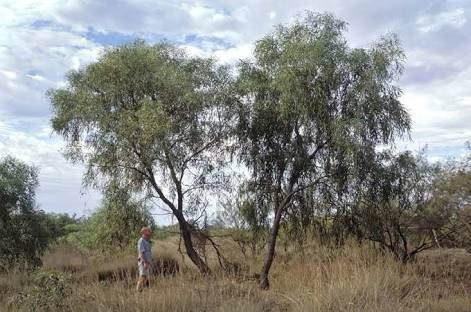
Acacia ampliceps is know to tolerate to at least 16 dS/cm
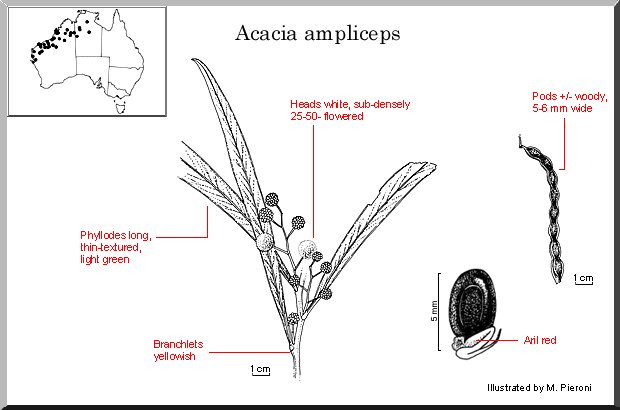
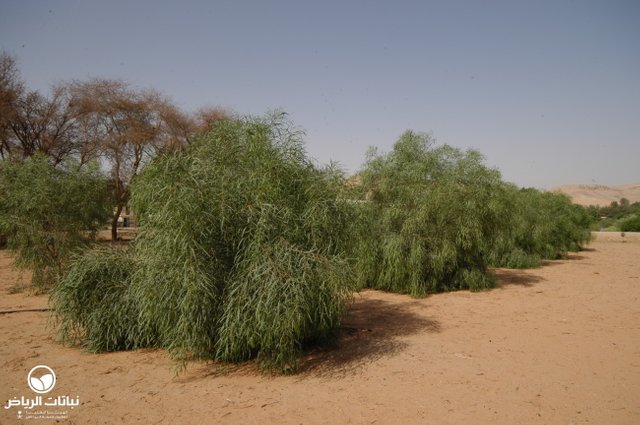
Acacia ampliceps has been used in Saudi Arabia where the temperatures can exceed 50 degrees C and was the most tolerant of all the species tested
As well as greening the area and so cooling the surface temperature, and in addition to the generation of both mulch and nitrogen from its sysmbiosis with the bacteria on its roots, the salt wattle is also good for firewood and the leaves can be fed to livestock, thereby generating useful manures for further rehabilitation work
Building Atoll soils
It is possible to change these non-soils into soils, it requires lots of organic matter inputs, additional nutrients , and time
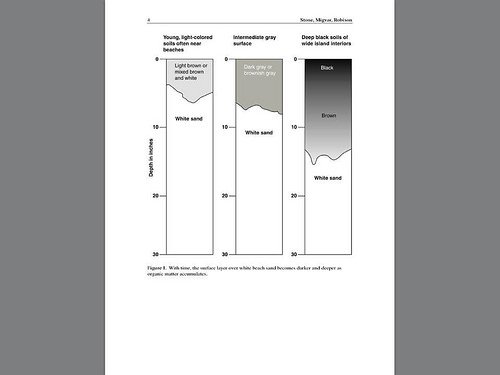
Over time the sand and coral can through natural process transform into a more fertile and dark soil rich in organic matter. The conditions for this exist under rare circumstances on coral atolls. But knowing it is possible is half of what i need to know to make it happen
With this knowledge we can find solutions that speed up this process. What nature can do by circumstance, humans can make happen much faster with intention
Atoll lenses
This is a special feature that may or may not be at play on this site.
Fresh water is less dense than seawater and in Atolls the rainwater than soaks into the ground it tends to sit perched on top of the underlying seawater layer. this is the freshwater lense
Ive dug to a maximum of 1.8 metres deep and there was moisture in the sand, just tangibly so, in the dry season. Also with the status of the site over the last 30 years there has been much less infiltrating into the sandy layer below than there will be once all water harvesting measures are enecated. While they may or may not ne a freshwater lens now, the conditions exist that allow one, and so i will move to create one
Part 2 – next
A whole lot of Solutions
That looks like an awesome project. You look like you are on a good path and will succeed. Have you considered spreading some sulfur on the soil to bring the PH back towards neutral?
Thats a good idea treebuilder.
Along with organic mulches and getting in plants that can build up that carbon
If i can find sulphur ill get some
This is great. That is quite the challenge, I wish you the best. I don't know much of anything, but my first thought is that the land needs lots and lots of poop. But that would require bringing in lots and lots of feed, and the animals. I enjoyed your research finding the natural life that you can use. I'll enjoy seeing the progress you have in the future.
I'm about to take over 2.8 acres pretty much the opposite of yours. It is basically a forest that hasn't been touched in 20 years, and it is literally connected to the Ouachita National Forest in Arkansas, US. I've got plenty of excess plant material, I wish I could send it to you. :)
Thanks @bobblehomestead
Yes bringing in organic material is an option. But somewhat expensive
Im going to attempt to do so to just kickstart on site production of mulch trees and plants
Hey there @reville, love the post!
This gem of a post was discovered by the @OCD Curation Crew!
Reply to this comment if you accept, and are willing to let us share your gem of a post! By accepting this, you have a chance to receive extra rewards and one of your photos in this article may be used on our compilation post!
You can follow @ocd – learn more about the project and see other Gems! We strive for transparency.
You put a lot of details into this, Great work with all of the photos too. You have a beautiful spot there! Good luck with your future gardening adventures!
please reply and I'll nominate your post to the curator team from @ocd! Thanks, and keep posting great content like this on Steemit!
Thank you very much for considering my post, i do accept. you may use any of my photos to promote my post
this is only the beginning..
Hey there! Your post is featured in the @ocd daily! Congrats!
You are definitely one of the world's warriors! Thanks for the post - Followed.
Thankyou kate-m
Just finished reading this book yesterday. Couldn't recommend it enough. Keep up the great work.
I just finished another PermaCulture class that spoke of taking back desert lands and reforesting and greening the area. Creating swales for water retention on the land was the first thing we did and then brought in loads of mulching material.
We did not have the abundance of salt that you are dealing with though. Your chose of going with Plan B is a very wise one, looking at the future.
I'm sure you know exactly what you are doing and all your research is impressive. This is such an exciting project. One I'll be keeping a watch on.
Thanks @themerrylotus
This site is special. Id not have thought swales were important on flat sand! But then i witnessed the impact of salt and silt in tbe upper layers that cause the water to run over and not soak into the soil.
So actually they are very important in this setting
More organic matter is certainly on the shopping list its just been difficult to access in bulk so far..
Only rice hulls and coconut husks so far
Swales have been a literal plant life saver for me as well. I can't wait to see your land a year from now.
Hi there, @reville Outstanding informational post. We are from The Curator. (A post style magazine on Steemit) We do curating for informative, creative, entertaining, yet undervalued posts. We love your fantastic post. And we feel that it is undervalued. We would like to share it in our magazine. But first, we would like to ask for your permission to add your post to our next issue, With a picture from your post. That we will use as a thumbnail, We will share a portion of the post gifts. With the posts that we share in the upcoming issue. If you agree to this. Please let us know below this comment. At your earliest convenience.
Thank you. PostHuntress, @the-curator
And keep on Steeming your superb knowledge filled posts.